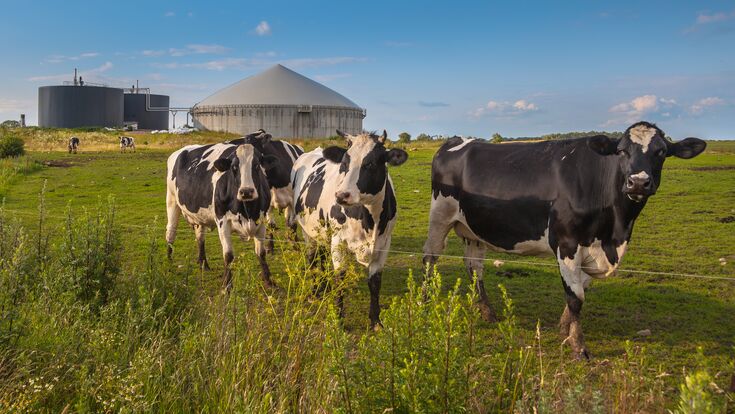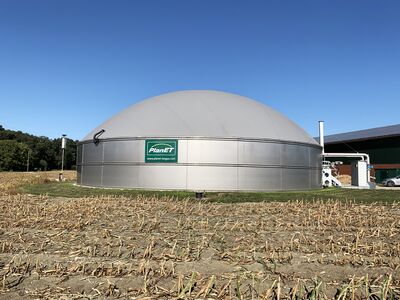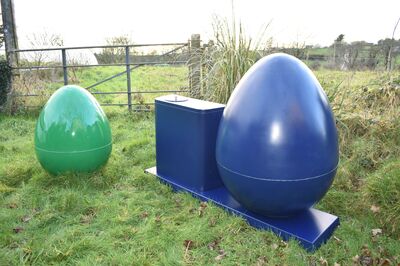Anaerobic Digestion : What about small scale anaerobic digesters?

As energy prices surge worldwide and more and more governments release legal directives to reduce the use of fossil fuels, alternative energies are becoming increasingly important. In the current climate, small-scale anaerobic digesters are no longer considered unprofitable.
Small-scale digesters have been “a thing” in developing countries for a while. And with good reason. Anaerobic digestion (AD) can convert animal manure, food waste, human waste, organic industrial wastes and sewage sludge into usable resources. The biogas produced through anaerobic digestion can be used for heat and electrical generation. The digestate can be used as a fertiliser. AD diverts biowaste to the production of renewable energy and so helps to reduce greenhouse gases. As research continues, the technology has the potential to play a pivotal role in the future of sustainable waste management.
Small does not equal small
There are reportedly millions of mini and micro digesters that treat the food waste, human waste and manure from households, small farms and communities in China, India, South America and Africa. But it has only been in the last couple of years that small-scale AD has become more popular throughout Europe and the United States. Although small is relative, as Maxime Lemonde, CEO of BiogasWorld, a business generation platform and network for the biogas industry, stresses (read the full interview here): “In North America or Europe, we will say it’s a small-scale digester when it’s under 5,000 tonnes of waste per year. This means that a small farm or a small food producer will be small-scale digesters.” While some industrial units exceed 1,000 kW, small agricultural units have a power capacity between 100 and 300 kW. Even smaller units are below 80 kW.
“In Asia or Africa, a small-scale digester will be a home digester for mainly human waste and some food waste. This means that when we talk profitability, it’s mostly for European and North American projects,” Lemonde continues. The increase of subsidies, strict waste regulation and industry awareness are also among the reasons why we are seeing more small-scale digesters.
No wonder that digesters built around the world vary in their construction materials, design complexity and of course cost. In developing countries, most of the digesters are plug-flow digesters, constructed without heating or mixing components. They are especially adaptable to tropical climates and require minimal maintenance. The anaerobic digesters we see in developed countries are mostly concrete stirred reactors, in which a portion of the biogas is used to heat the digester.
In Asia or Africa, a small-scale digester will be a home digester for mainly human waste and some food waste. This means that when we talk profitability, it’s mostly for European and North American projects.Maxime Lemonde, BiogasWorld
Flexible design is the trend
Modular systems, mobile units and so called plug-and-play units are today’s trends. Like the VALENTIN biogas plant from German company PlanET Biogas. Their smallest digester, with a volume between 580 m3 and 891 m3, was initially developed for the international agricultural market, but the company quickly realised that it could also be used very effectively in other industries. The output depends on the substrate, but can range from 40 to 150 kW, as Carsten Steentjes, Head of Special Sales at PlanET Biogas, explains: “Each substrate behaves differently and takes more or less time to convert from organic to methane. For pure manure, the flow capacity per year ranges from 7,000 m3 to 12,000 m3 with an average residence time of about 30 days. The output also depends on the substrate, but can range from 40 to 150 kW.” The ‘plug-and-play’ plant fits into two containers and can be shipped and installed worldwide. “Thanks to its modular design, it can easily be adapted to individual needs. A PlanET Biogas supervisor helps with the set-up, which is usually done within two weeks,” says Steentjes (read the full interview here).
With an anaerobic digester of that size, farms or small settlements are able to produce their own energy. A disadvantage is that it is not very flexible with regard to the substrate. It must be clarified in advance which substrate is to be processed, and the system is adapted to this. This cannot simply be changed again.

Small, smaller, micro
Even smaller units are the speciality of companies like HomeBiogas and MyGug. Their approach is similar. They offer easy to install and use units for individual households, small businesses and communities. Israel-based company HomeBiogas recently won a UN tender to supply biogas systems for the treatment of organic waste at refugee camps in Africa. “We are proud that the UN selected HomeBiogas to take on this important project that will have an immense impact on the environment in the refugee camps. We seek to treat waste in a sustainable way and improve the lives of hundreds of thousands of people living in refugee camps around the world,” Oshik Efrati, co-founder and CEO of HomeBiogas, said in a statement.
MyGug inventor and designer Kieran Coffey, on the other hand, chose to build egg-shaped micro digesters. “Among other advantages, the egg shape provides ideal mixing conditions as there are no corners within the tank and this aids excellent mixing,” says the Irish design engineer (read the full here), who hopes to help tackle the problem of food waste with his invention.

Sustainable Waste Management
Inventions like these have come at the right time. In an effort to be more sustainable as well as more independent from fossil fuels and energy imports, many people are on the lookout for creative solutions. The demand for small-scale digesters is high all over the world, says Carsten Steentjes. Enquiries come from South America as well as the Asian market. “Small-scale digesters might also be very interesting in regions where the infrastructure for other renewables is already saturated. Subsidies and legal provisions also play a role, of course,” he adds. Maxime Lemonde agrees: “The US, France, the UK and Italy are generally good markets for the biogas industry, so there might also be room for the growth of small-scale digesters.”
As research continues, anaerobic digestion is becoming a viable method for waste treatment that can provide energy recovery from waste biomass as well as a beneficial use of all waste streams. As a biological conversion technology, it will become more and more important for future sustainable waste management.

